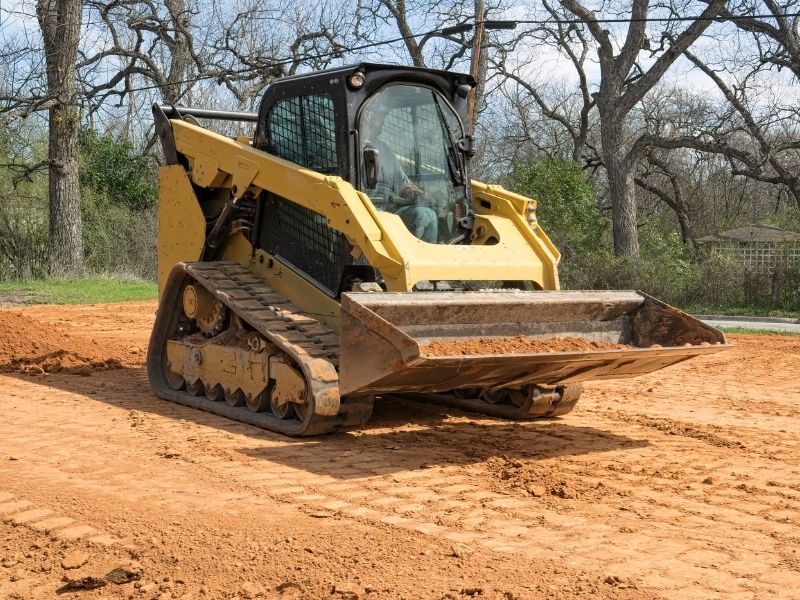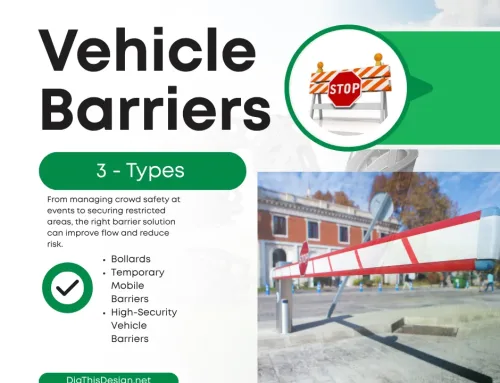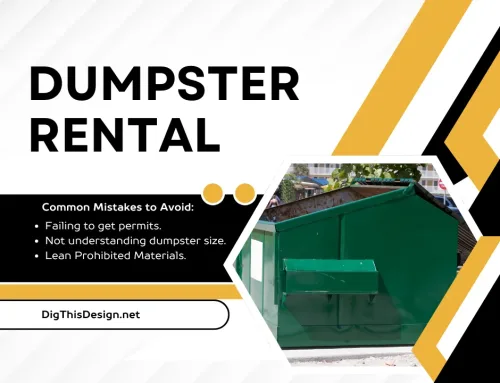Skid steers are often used in construction. With so many attachments available, the skid steer becomes a very versatile piece of equipment.
A skid steer is a compact piece of construction equipment with a wide range of applications. It is usually used for excavating. It is lightweight and nimble, and its arms can be connected to different equipment for various construction and landscaping tasks.
Skid steers are available with four wheels or two tracks. Each side’s front and rear axles are locked in sync with one another. However, they can be managed independently of the wheels on the other side of the machine.
The wheels are rigidly aligned and do not turn. To turn the skid steer, the operator must increase the speed of one of the wheels, causing the wheels to skid or drag over the ground while the skid steer turns in the opposite direction. The name of the machine is derived from this steering function.
Your Guide To Attachments For A Skid Steer

Skid steers provide solutions for a wide range of work situations. They provide a good opportunity to take advantage of the many attachment options for different tasks.
Apart from the typical smooth-edge bucket, other attachments significantly cut labor expenses for a project. For example, Blue Diamond attachments are excellent for skid steers. You can do almost any task easily and efficiently with this versatile equipment.
Let’s get to know about some of the amazing skid steer attachments.
⎆ Pallet forks.
Pallet forks are a necessary component of any skid steer. They work to facilitate material handling through difficult job site terrain. Incredibly, many skid steers have a lifting capability of 2,000 lbs. or more.
Pallet forks convert a loader into a forklift, providing the strength to complete a task quickly. Because a skid steer doesn’t need the flat concrete surfaces that standard forklifts do, this system is perfect for a range of loading and unloading jobs.
⎆ Hydraulic augers.
Whether drilling a single hole or thousands, holes as small as six inches or as large as 42 inches, this is your tool. In fact, the skid steer auger and skid steer post driver enables the operator to make holes accurately in the ground for footings, fencing, planting, or placing sonotubes.
⎆ Hydraulic breakers.
Breakers enable the operator to carry out massive demolition jobs from inside the cab safely. For instance, these attachments break up concrete slabs to 18 inches thick. Of course, this requires considerable physical work using pneumatic hand tools.
⎆ Grapple buckets.
These attachments are available in various configurations to aid in demolition operations and the removal of brush and landscaping waste. They let the operator collect big mounds of rubbish and dispose of it by clamping down with hydraulic pressure.
⎆ Landscape rakes.
These are surely a landscaper’s best friend. A landscape rake’s flexibility allows it to level, rake, remove debris, pulverize, prepare seedbeds, dethatch, remove old lawns, prepare new lawns, and repair the ground after demolition.
⎆ Dozer blades.
Dozer blades for skid steers are an excellent alternative for leveling, grading, and pushing soil when there’s no space for a bulldozer. By using the same six-way blade, these attachments allow the same outcomes as bigger equipment in a smaller area.
⎆ Hydraulic brush cutters.
These attachments are ideal for mowing down high fields, cutting pathways, and tilling new areas. These hydraulic machines, which range in size from 48 to 72 inches, swiftly mow down grass, weeds, and even tiny brush.
⎆ Forestry mulchers.
These powerful machines transform trees and underbrush from overgrowth to mulch from the comfort of the skid-steer cab, making them ideal for land clearing, breaking trails, leveling construction sites, and cleaning storm damage.
⎆ Backhoe.
Backhoe attachments are ideal for digging huge ditches. Backhoe attachments with heavy-duty cast teeth and big bucket diameters can break through hard dirt using a skid steer loader. Backhoes are commonly in use to trench utility lines, excavate basements, dig drainage ditches, and lay footings.
⎆ Saws.
Skid steer saw attachments make it much simpler to cut through the material. Road construction and demolition operations often employ saw attachments to cut asphalt repairs and road expansion joints.
⎆ Hammer.
With a hammer attachment, you can shatter concrete and rock. In fact, you no longer must depend on hand-held jackhammers. Instead, these motorized sledgehammers easily break through concrete or other materials. Hydraulic hammers are great for construction, demolition, and road maintenance applications.
⎆ Broom and sweeper attachments.
These attachments enable the user to clean huge sections of flat concrete or asphalt quickly. They are available in both open and closed formats. Moreover, they sweep dirt into a bucket that then goes into a dumpster. Therefore, they are a great tool for post-construction cleaning.
⎆ Snow removal attachments.
These attachments enable company owners use their equipment in places where earth moving is not optimal during the winter. Snowblower attachments hydraulically operate plow blades, and manual snow pushers ranging from 6 to 12 feet (in length). It also provides a chance to put a machine to work for the company during the winter.
⎆ Planer attachments.
Planer attachments are for cutting and grinding both concrete and asphalt. These machines let the operator adjust and maintain the mate’s depth, breadth, and slope to accommodate uneven terrain. Additionally, they can clean up after bigger milling machines, reduce drainage in parking lots, and trim highway margins.
⎆ Trencher attachments.
For opening wider areas of land, these attachments are excellent for walk-behind and ride-on trenchers. They are customizable with bars ranging in depth from four to six inches and widths ranging from four to twelve inches. Substituting a bucket for the trencher makes easy work of backfilling the trench.
In conclusion.
These amazing skid steer attachments enable this machine to do many tasks. A skid steer with the appropriate attachments can take on practically any task from gardening to demolition. If you have any questions or suggestions, we always love to hear from you in the comments below. Also below are links to more interesting articles about ALL things DESIGN for your home or business.
Images Courtesy of Canva.
Other Posts You Might Enjoy:
7 Tips for Home Improvements for the Summer
5 Home Improvements that Add Instant Value





